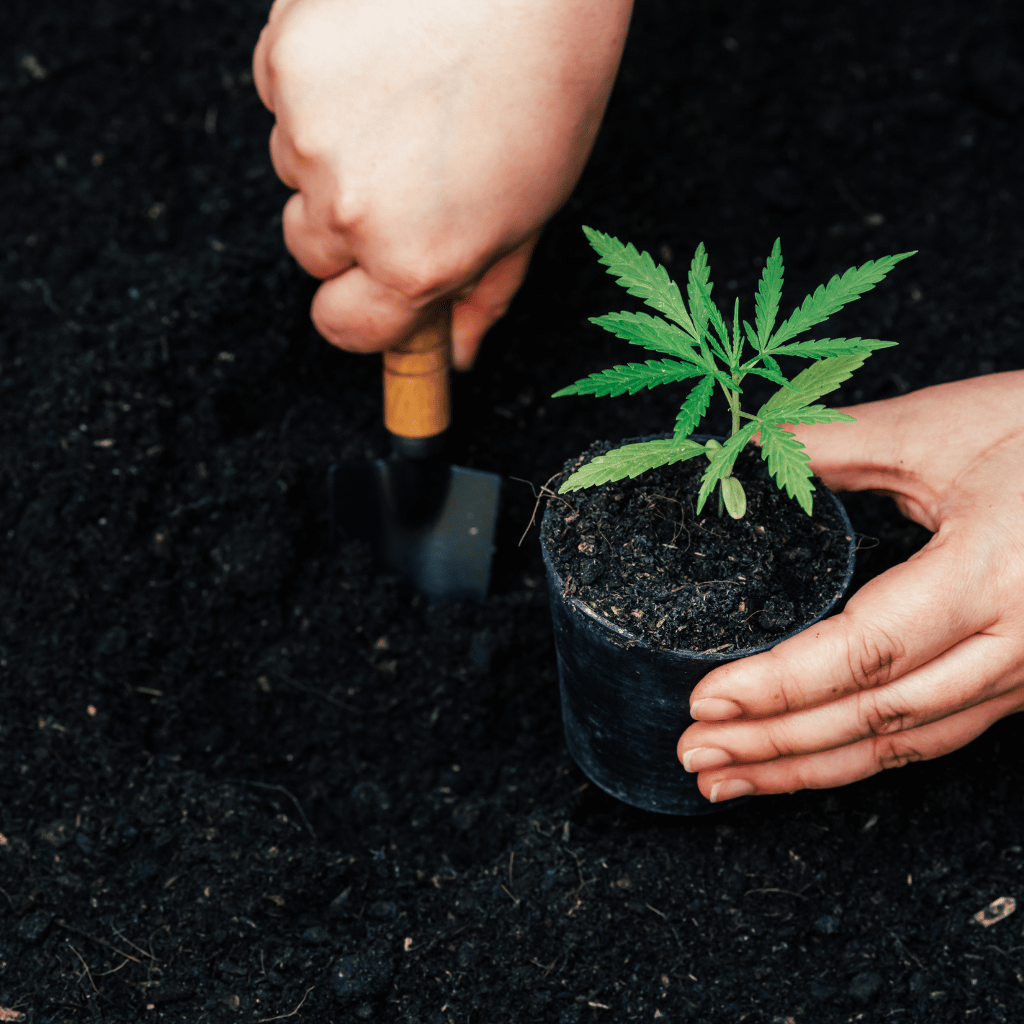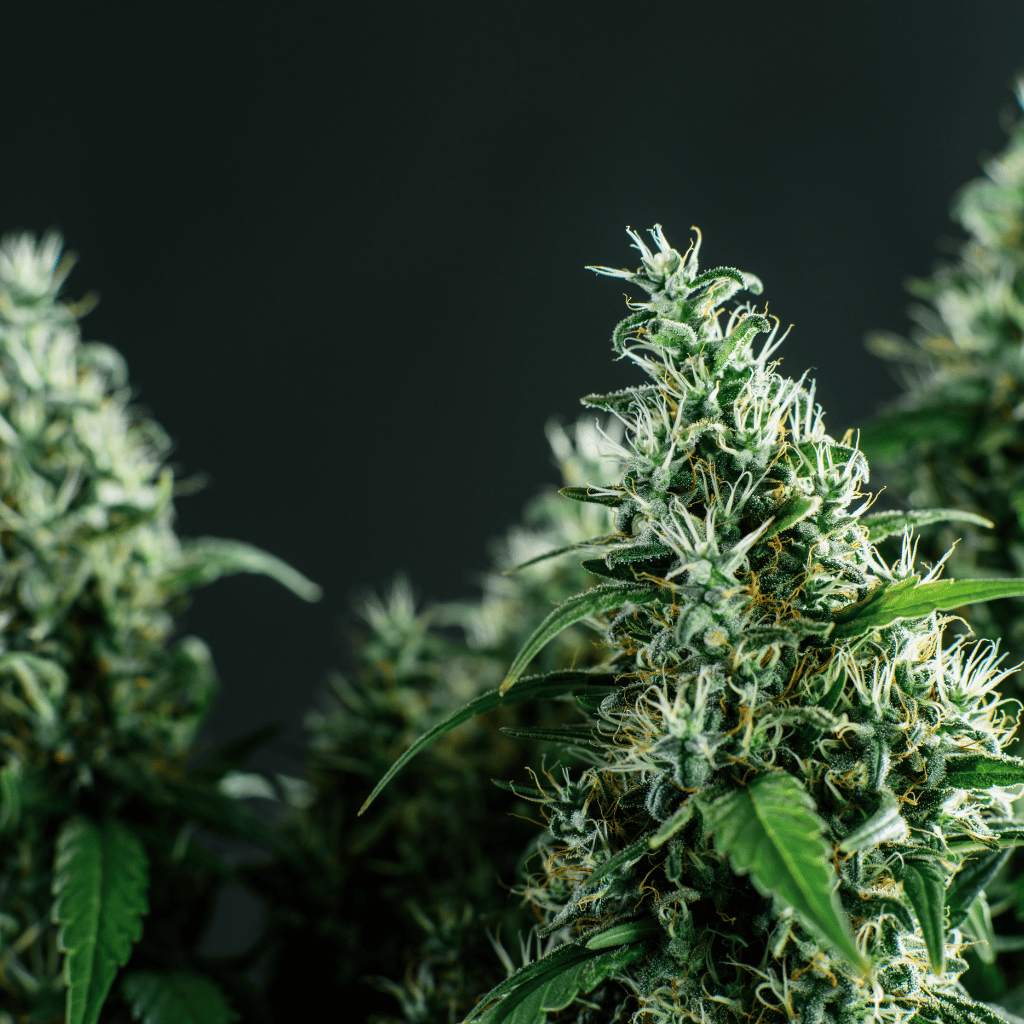The growth phase of the cannabis plant is one of the most crucial phases in the entire cultivation process. This is where the plant forms its structure, develops leaves, stems and roots, and lays the foundation for later flowering. If you make mistakes in this phase, you risk a weak plant with a low yield. In this article, you will learn everything you need to know about the growth phase of cannabis - from seedling care to the optimal conditions in terms of light, soil, water and nutrients.
Start of the growth phase: from seedling to young plant
After the cannabis seeds have successfully germinated, the growth phase begins. During this phase, the plants develop strong stems, large leaves and branch out. This phase is crucial, as it lays the foundations for the stability and health of the plant.
Light supply
During the growth phase, the right light supply is of central importance. Cannabis plants require around 18 hours of light per day and 6 hours of darkness during this phase. Special grow lights or LED lights provide the ideal spectrum required for the vegetative phase.
Important points on light supply:
- Amount of light: 18 hours of light, 6 hours of darkness
- Type of light: LED lights or special lamps for plant growth
- Distance: The light source should be positioned close to the plant without burning it.
Soil and nutrients during the growth phase
High-quality, well-aerated soil is essential for the growth of the cannabis plant. The soil should be loose and rich in nutrients to ensure optimal nourishment of the roots. During the growth phase, nitrogen is a particularly important nutrient as it promotes leaf growth.
The right watering
Water plays a decisive role in growth. The soil should always be slightly moist, but never soggy. Waterlogging can quickly lead to root rot, while too little water inhibits growth.
Important tips for watering:
- Water frequency: Water regularly, but avoid waterlogging
- Water quality: If possible, use filtered water or rainwater, as tap water often contains too many chemicals.
Optimal temperatures and humidity
During the growth phase, temperatures should be between 20 and 28 degrees Celsius. The temperature should not drop too much, especially at night, so as not to inhibit growth. Humidity also plays a role: while the plants are still young, the humidity should be around 60 to 70 % to promote leaf growth.
Repotting during the growth phase
During the growth phase, plants develop a strong root system that regularly requires more space. This is why it is often necessary to transplant into larger pots. As soon as the roots have grown through the pot, the plant should be repotted in a larger container. When transplanting, take care not to damage the delicate roots and place the plant in loose, well-aerated soil.
Tips for transplanting:
- Choose pots with good drainage
- Transplant carefully to avoid damaging the roots
- Water immediately after transplanting to moisten the new root zone
Promoting root growth
A strong root system is crucial for the successful growth of the cannabis plant. In addition to using loose soil and proper watering, special root stimulators can help to make the roots stronger and more resistant. These nutrient additives promote the formation of fine roots, which improves nutrient uptake.
Nutrient supply during the growth phase
During the growth phase, cannabis plants primarily require nitrogen to promote leaf and stem growth. Other important nutrients include phosphorus and potassium, which are also essential for growth. It is important to provide the plant with a suitable nutrient fertilizer at regular intervals that is tailored to the growth phase.
Important nutrients:
- Nitrogen (N): Promotes leaf growth
- Phosphorus (P): Supports root growth
- Potassium (K): Promotes the stability of the plant
Pruning and training the plant
To promote growth and allow better air circulation between the plants, regular pruning of the lower leaves is advisable. In addition, various training techniques such as LST (Low Stress Training) can be used to bring the plant into the desired shape and make optimum use of the light.
Tips for training:
- LST promotes horizontal growth
- Pruning removes unnecessary leaves and branches and improves air circulation
Problems during the growth phase
As with every phase of cannabis cultivation, problems can also occur during the growth phase. Common problems include nutrient deficiencies, pest infestation and root rot. It is important to check the plants regularly for signs of problems and to react quickly.
Light spectrum and growth phase
The right light spectrum plays a decisive role in the growth phase. In this phase, the plants need a blue light spectrum to stimulate leaf growth. Many growers use special LED or CFL lamps that cover this spectrum. Make sure that the lamps are not positioned too close to the leaves to avoid burns.
Conclusion: Successful growth phase of the cannabis plant
The growth phase of the cannabis plant is crucial for the subsequent harvest success. A balanced combination of the right light source, regular watering, high-quality soil and a targeted supply of nutrients can ensure that the plant grows strong and healthy. With the right care and a watchful eye for potential problems, this phase will lay the foundation for a strong and productive plant.




Leave a comment
This site is protected by hCaptcha and the hCaptcha Privacy Policy and Terms of Service apply.